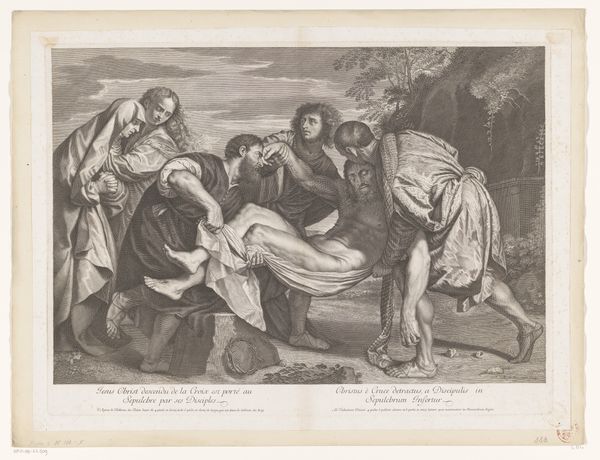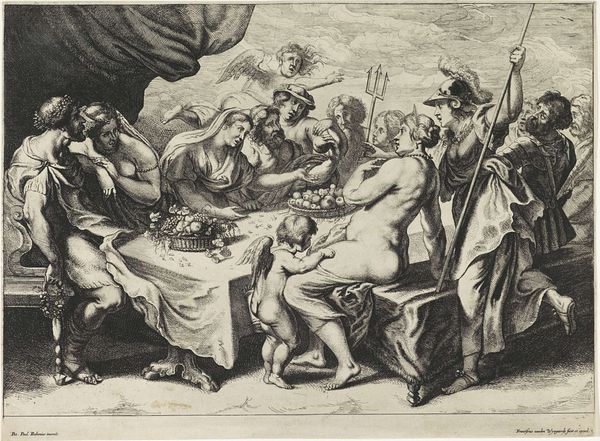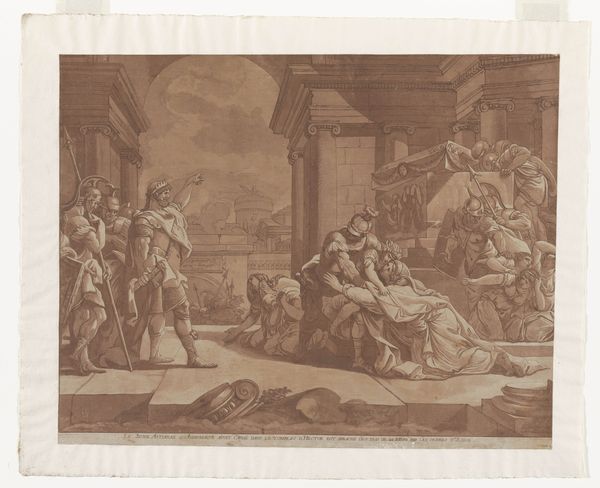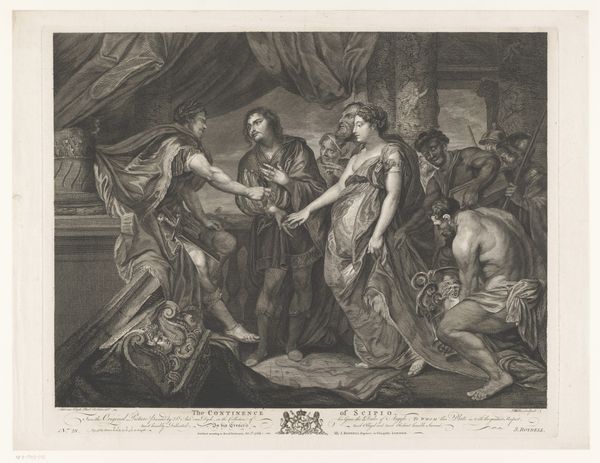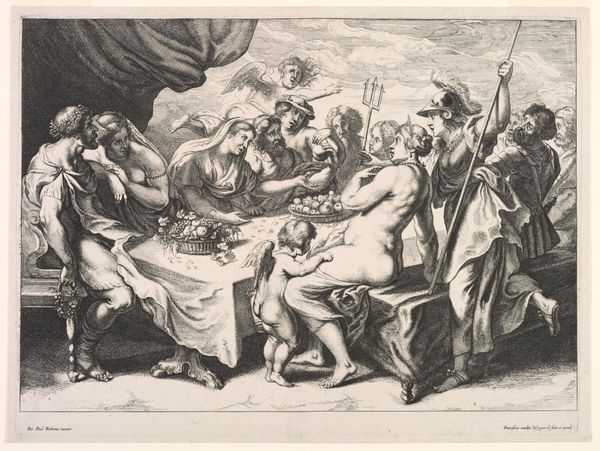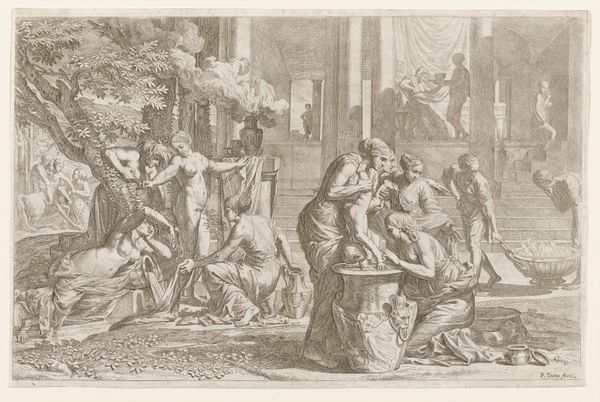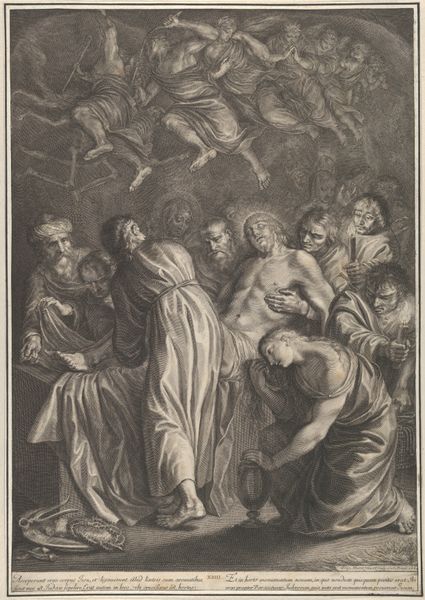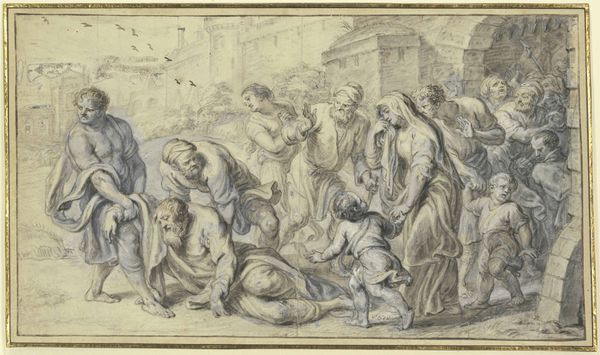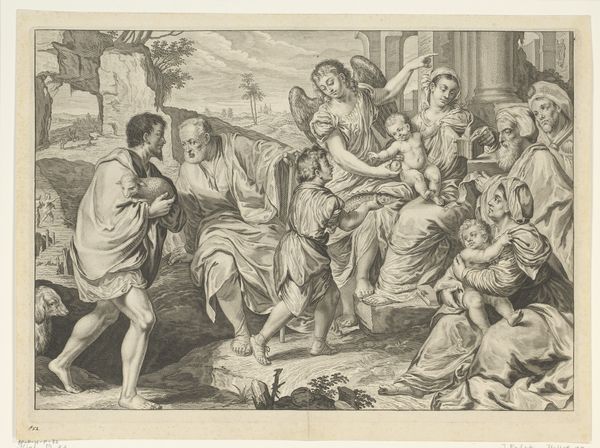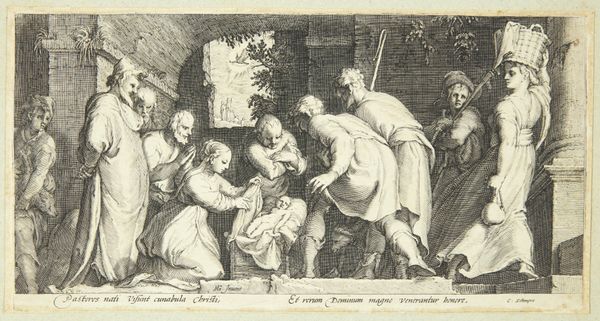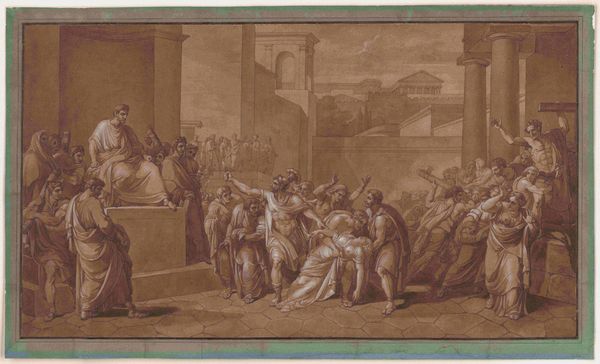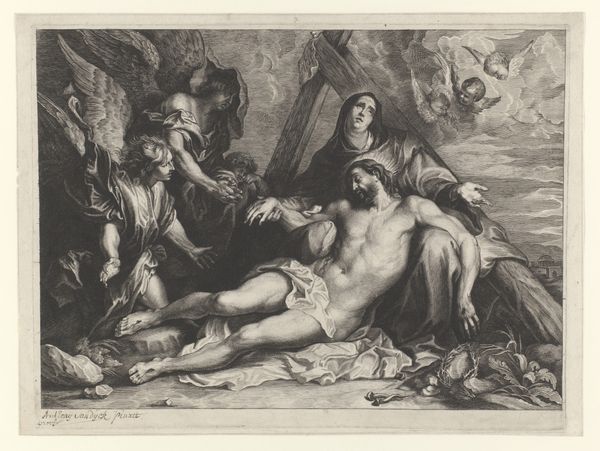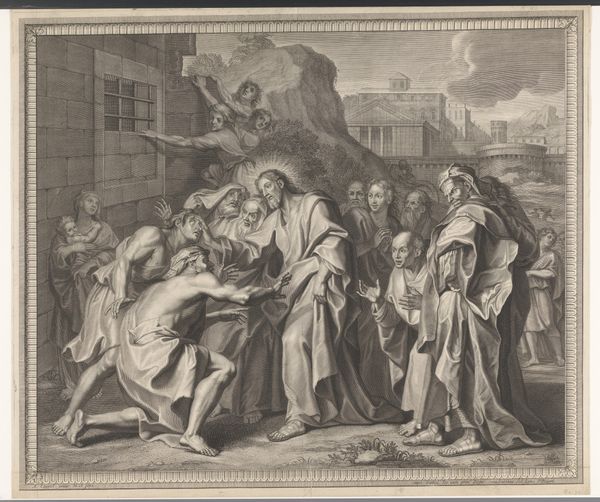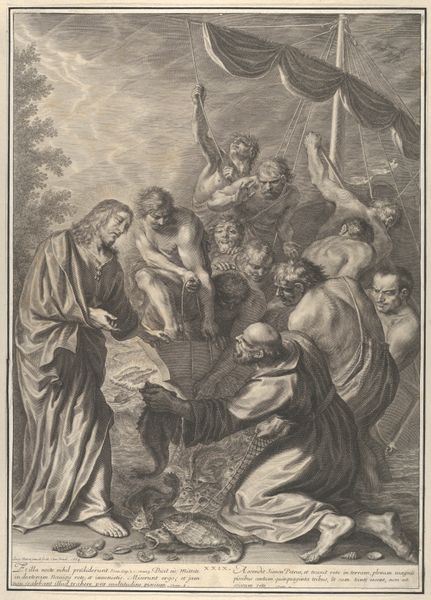
print, engraving
#
narrative-art
#
baroque
# print
#
figuration
#
chiaroscuro
#
history-painting
#
engraving
Dimensions: height 582 mm, width 697 mm
Copyright: Rijks Museum: Open Domain
Editor: Here we have "Tobit Burying the Dead," an engraving made between 1680 and 1694 by Paul van Somer II, currently at the Rijksmuseum. The strong contrasts immediately catch my eye, emphasizing the drama of the scene. It definitely evokes a sense of somber respect. What do you make of it? Curator: It’s a powerful piece. Thinking about it from a historical viewpoint, consider the act of burying the dead in the 17th century. In a time of frequent warfare and disease outbreaks, proper burial held significant social and religious importance. This print elevates Tobit’s actions to a heroic level, emphasizing piety and communal responsibility in the face of adversity. Editor: I hadn't really considered that! So the artist is really commenting on how Tobit is acting against maybe a larger backdrop of chaos or disregard for life? Curator: Precisely. And consider the print medium itself. Engravings like this circulated widely, bringing biblical narratives and moral lessons into people’s homes. The story of Tobit would have been particularly resonant, perhaps subtly influencing social norms regarding the treatment of the deceased, especially in less stable urban communities. How does the visual composition play into that narrative effect, would you say? Editor: The figures clustered around the body really draw you in, and the stark light sort of spotlights the ritual. So the composition combined with accessibility of the print is creating, or reinforcing, societal values? Curator: Exactly! And that's something easily overlooked. What does this tell us about the evolving function of art? Editor: Wow, that really opens my eyes to the bigger picture here. Thanks for putting that into perspective. Curator: My pleasure. These are stories art continues to tell us, centuries later!
Comments
No comments
Be the first to comment and join the conversation on the ultimate creative platform.
